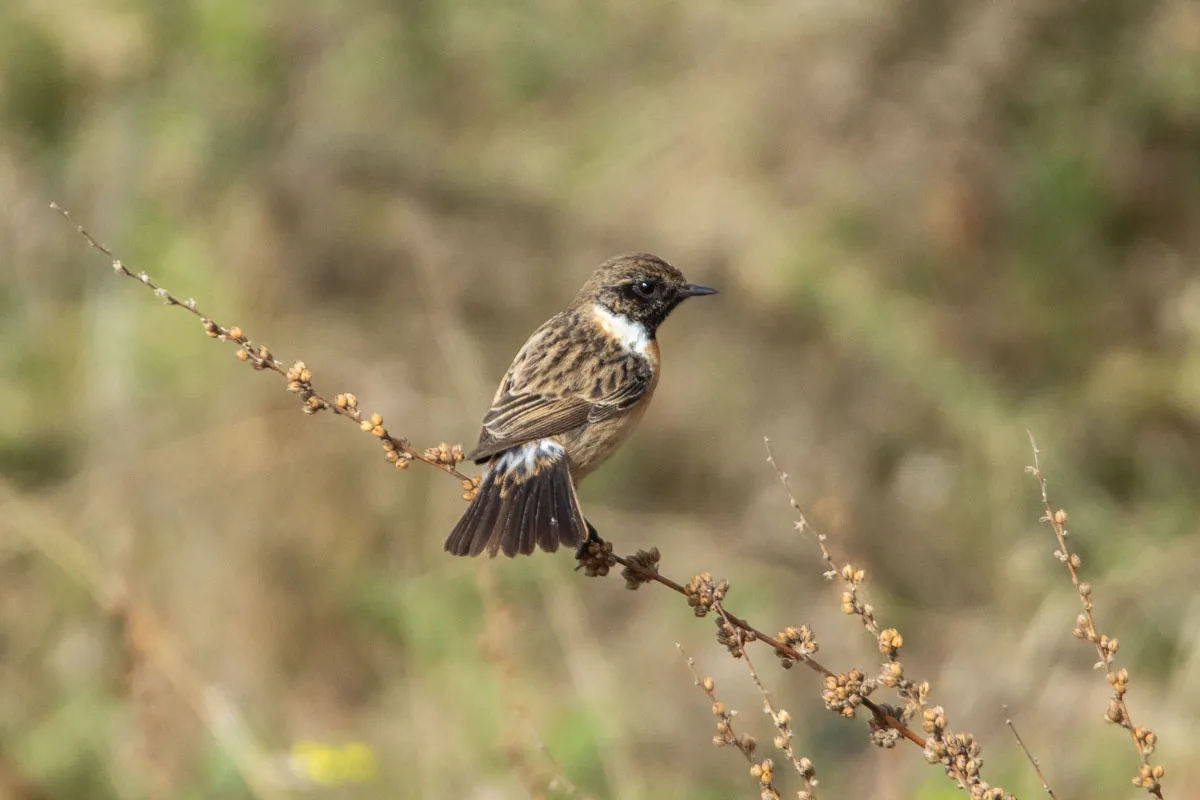The European Stonechat, Saxicola rubicola, is a small bird (slightly smaller than a Robin) and was formerly classified as a member of the thrush family, Turdidae, but is now considered a member of the Old World Flycatcher family, Muscicapidae.
Range
It is found throughout Europe, Ukraine and also in parts of North Africa.
Description
The sexes are quite distinct, the summer male having black upperparts, a black head, an orange throat and breast, and a white belly and vent. The female has brown upperparts and head. The Stonechat is 11 to 13cm (4.5 to 5.1 inches) in length and has fairly short wings.
Females…

European Stonechats breed in heathland, coastal areas and rough grassland. They are short-distance migrants or non-migratory, with those in northern Europe heading south to warmer climes in winter, either to southern Europe or even North Africa.




Breeding
European Stonechats begin breeding when they are one year old and build a nest in dense vegetation close to the ground. The clutch is typically 4–6 eggs, which are pale blue to greenish-blue with red-brown spots. They are incubated for 13 to 14 days by the female beginning after the last egg is laid and both parents care for and feed the chicks.
The nestlings fledge after 12 to 16 days but continue to be fed by both parents for a further 4 or 5 days. The female then begins building a new nest for the next brood while the male continues to feed the young for another 5 to 10 days. The parents raise two or three broods in a season.
Males…



These birds always seem quite happy to pose, and these particular individuals were down by the (dry) rio Chillar in Nerja.